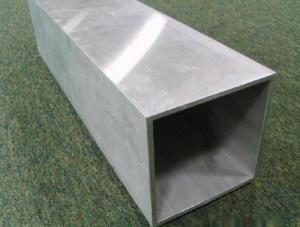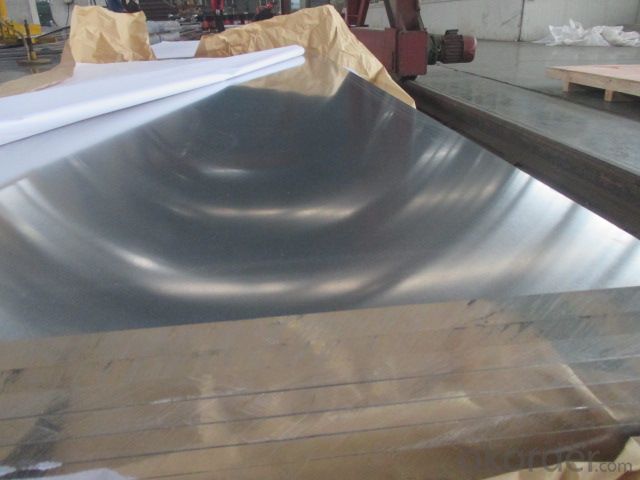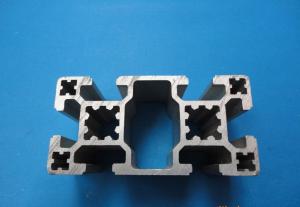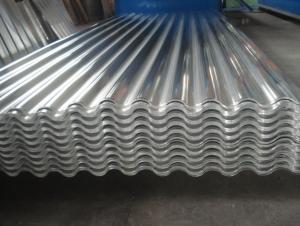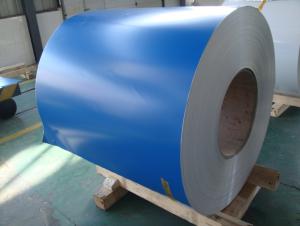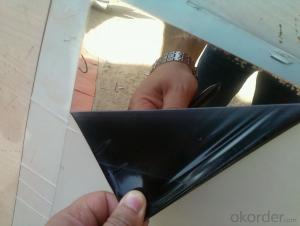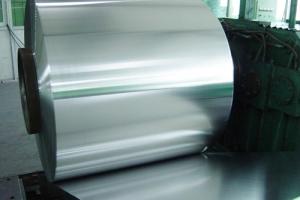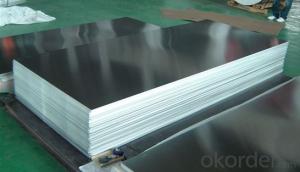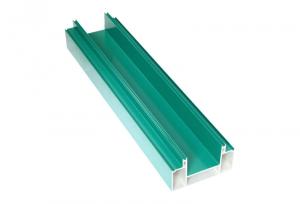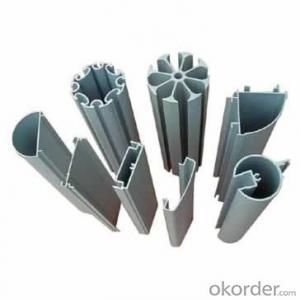Extruded Aluminum Profiles Canada - Aluminium Sheet Cold Rolled Hot Rolled Sheet Plate
- Loading Port:
- Shanghai
- Payment Terms:
- TT or LC
- Min Order Qty:
- 3 m.t.
- Supply Capability:
- 5000 m.t./month
OKorder Service Pledge
OKorder Financial Service
You Might Also Like
1.Structure of Product Description
Cold rolled aluminum sheet AND plate and slab and something else grades are all widely used in the field of construction and other decoration field, etc.
is widely used in the field of construction field and decoration field, etc.
There are many different grades, such as: 3000 series, 7000 series, 8000 sereis,
1000 series, 2000 series, 3000 series, 5052,5754,5083,6061,6063,8011, etc.
The temper is include O,F,H14, H22, H24, H44,H112,H114,etc.
2. Main features of the product
a.Competitive price
b.Frist-Class Service.
c. Shortest service.
3. Image.
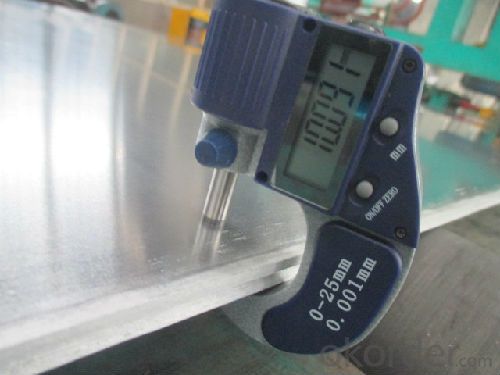

4. Product detailed sizes:
1000mm*2000mm, 1219mm*2438mm,1250mm*2500mm,1000*1000,2000*2000mm,
1500mm*3000mm, etc.
5. FAQ:
What is the quality standard?
---Usually our standard is GB3880-2006 or others.
What is the width range?
---It is from 500mm to 1500mm, etc.
---Normally it is around 9090 tons totally.
Where is your client from?
---Normally it is from Japan, USA, sri lanka, bangladesh, ENGLISH, SINGAPORE, ETC.
What is your mainly products?
---Normally they are aluminum sheet, checkered sheet, mirror finish aluminium sheet, aluminum casting coil, etc.
- Q: This question asks for a list of various uses of aluminum profiles within the construction industry.
- <p>Aluminum profiles have a wide range of applications in the construction industry due to their strength, durability, and lightweight properties. They are used in window and door frames for their resistance to corrosion and ease of maintenance. They are also employed in curtain walls, which are the outer coverings of buildings, providing both aesthetic appeal and structural integrity. Aluminum profiles are utilized in the construction of scaffolding for their high strength-to-weight ratio, ensuring safety and stability. Additionally, they are used in the manufacturing of modular buildings and prefabricated structures due to their ease of assembly and disassembly. Other applications include roofing systems, flooring structures, and as support beams in various construction projects.</p>
- Q: What are the different shapes available for aluminum profiles?
- Aluminum profiles come in a variety of shapes, each designed to cater to different needs and applications. Some commonly used shapes include T-Slot profiles, square profiles, rectangular profiles, round profiles, L-shaped profiles, U-shaped profiles, and custom profiles. T-Slot profiles are widely used in construction, robotics, and industrial applications due to their easy assembly and integration of other components. Square profiles provide excellent strength and rigidity, making them ideal for structural applications like building frames and support structures. Rectangular profiles offer versatility and can be used in enclosures, partitions, and conveyor systems. Round profiles are commonly utilized for applications that require a smooth and aesthetically pleasing finish, such as architectural purposes. L-shaped profiles, on the other hand, are often used for corner joints, edges, and brackets, providing structural support and stability. U-shaped profiles resemble an open channel and are frequently used to house and guide cables, wires, or other components. In addition to these standard shapes, aluminum profiles can also be custom-designed and manufactured to meet specific project requirements. This allows for greater flexibility in ensuring that the profiles perfectly fit the intended application. Overall, the availability of different shapes for aluminum profiles empowers engineers, designers, and manufacturers to choose the most suitable shape for their specific needs. This ensures optimal performance, functionality, and aesthetics.
- Q: This question asks whether aluminum profiles can be utilized to minimize heat loss or gain within buildings.
- <p>Yes, aluminum profiles can be used to reduce heat loss or gain in buildings. They are often used in combination with thermal break technology, which prevents heat transfer across the aluminum frame. This technology can significantly improve a building's energy efficiency by reducing heat conduction through the frame. Additionally, aluminum profiles can be used in the construction of energy-efficient windows and doors, further enhancing insulation and reducing heat transfer. The lightweight and durable nature of aluminum also makes it an attractive material for sustainable building practices.</p>
- Q: How do you ensure proper weatherproofing with aluminum profiles?
- To achieve effective weatherproofing with aluminum profiles, there are several essential measures that can be implemented. Firstly, it is crucial to opt for aluminum profiles of superior quality that are specifically designed to withstand weather conditions. These profiles should undergo a suitable finishing process or be coated to safeguard against corrosion and weather-related factors. Subsequently, it is important to adhere to proper installation techniques to ensure a secure and tight fit. This entails accurately aligning and connecting the profiles using appropriate fasteners or adhesives. Any gaps or openings between the profiles should be sealed using weatherproofing materials like silicone or rubber gaskets to prevent the infiltration of water or air. Moreover, careful attention must be given to the design and construction of the aluminum profiles. This includes incorporating features such as sloped surfaces, drip edges, and drainage systems to facilitate the runoff of water and prevent the accumulation or pooling of moisture. Additionally, provisions should be made to address thermal expansion and contraction, as these factors can impact the effectiveness of the weatherproofing. Regular maintenance plays a vital role in ensuring long-lasting weatherproofing. It is essential to conduct periodic inspections to identify any signs of wear, damage, or deterioration in the profiles or their weatherproofing components. Prompt action should be taken to rectify any issues through repairs or replacement to maintain the integrity of the weatherproofing system. In conclusion, by selecting high-quality aluminum profiles, adhering to proper installation techniques, incorporating appropriate design features, and conducting regular maintenance, it is possible to achieve effective weatherproofing and enhance the durability and performance of aluminum profiles against weather elements.
- Q: This question asks for methods to avoid corrosion on aluminum profiles during the installation process.
- <p>To prevent corrosion on aluminum profiles during installation, follow these steps: Use high-quality aluminum that has a protective oxide layer. Ensure the installation environment is dry and clean. Avoid contact with corrosive substances like acids or alkalis. Apply a protective coating or sealant if the profiles will be exposed to harsh environments. Use stainless steel or corrosion-resistant fasteners. Regularly inspect and clean the profiles to remove any dirt or debris that could lead to corrosion. Proper installation techniques and maintenance can significantly reduce the risk of corrosion on aluminum profiles.</p>
- Q: This question asks for guidelines to ensure the proper and safe installation of aluminum profiles.
- <p>To ensure the correct and safe installation of aluminum profiles, follow these steps: 1. Use high-quality aluminum profiles that meet industry standards. 2. Prepare the surface by cleaning and leveling it. 3. Use appropriate tools like drills, screws, and cutting equipment. 4. Follow the manufacturer's guidelines for installation. 5. Ensure proper alignment and spacing of the profiles. 6. Secure the profiles with the right fasteners and adhesives. 7. Check for any sharp edges or protrusions after installation. 8. Regularly inspect and maintain the profiles to prevent any damage or wear. By adhering to these steps, you can ensure a safe and secure installation of aluminum profiles.</p>
- Q: What are the different types of fasteners used for aluminum profiles?
- For aluminum profiles, there exists a range of fasteners that are commonly employed. These include: 1. T-slot nuts: These nuts are specifically designed to fit seamlessly into the T-slot grooves found on aluminum profiles. Equipped with a threaded hole, they enable the attachment of bolts, screws, and other fasteners. 2. Bolts and screws: These fasteners serve the purpose of securing aluminum profiles either to each other or to other components. They are available in various lengths and sizes, catering to different applications. 3. Corner brackets: Corner brackets are implemented to establish robust joints between aluminum profiles at right angles. Typically, they are equipped with holes for the easy attachment of screws or bolts. 4. T-bolts: T-bolts resemble regular bolts, with the exception of a T-shaped head that fits snugly into the T-slot grooves of aluminum profiles. This design enables rapid and secure attachment without the need for nuts or additional hardware. 5. Angle brackets: Angle brackets are utilized to establish joints between aluminum profiles at varying angles. Usually featuring holes for screws or bolts, they facilitate the secure connection of profiles. 6. Clamps: Clamps are employed to hold aluminum profiles in place or to affix them to other components. They are available in diverse designs, such as lever clamps or eccentric clamps, and can be effortlessly adjusted and tightened for a secure fit. 7. End caps: These caps are specifically designed to cover the ends of aluminum profiles, offering a polished appearance while safeguarding the profile from debris or potential damage. These examples represent merely a selection of the diverse fasteners employed for aluminum profiles. The choice of fastener ultimately depends on the specific application and the desired level of strength and versatility.
- Q: Are aluminum profiles suitable for automotive racks and carriers?
- Yes, aluminum profiles are suitable for automotive racks and carriers. Aluminum is a lightweight and strong material, making it ideal for applications where weight reduction is important, such as automotive racks and carriers. Aluminum profiles can be designed and engineered to meet specific requirements, allowing for customization and versatility. Additionally, aluminum is corrosion-resistant, ensuring the durability and longevity of automotive racks and carriers, even in harsh weather conditions. The material's high strength-to-weight ratio also contributes to improved fuel efficiency and reduced emissions. Overall, aluminum profiles provide a reliable and efficient solution for automotive racks and carriers.
- Q: I would like to know where Urumqi has industrial aluminum profiles, such as 3030, 4040, 3060 aluminum, etc., note that industrial aluminum, not doors and windows, aluminum profiles, the difference between the two very large!
- And shares in the east railway station there, the east railway station and then go one Station Road (near the North Main Road) can see.
- Q: Are aluminum profiles suitable for modular office systems?
- Yes, aluminum profiles are suitable for modular office systems. Aluminum is a lightweight and versatile material that offers various advantages for modular office systems. Firstly, aluminum profiles are highly durable and have excellent strength-to-weight ratio, making them suitable for supporting various structures and office components. They can withstand heavy loads and provide stability to the modular system. Secondly, aluminum profiles are corrosion-resistant, which is crucial for office environments that may have moisture or humidity. This ensures that the modular office system will maintain its integrity and appearance over time. Additionally, aluminum profiles offer design flexibility, allowing for customization and adaptation to different office layouts and requirements. They can be easily modified, cut, and assembled to create a modular system that meets specific needs. This flexibility also allows for future expansion or reconfiguration of the office space. Furthermore, aluminum profiles are environmentally friendly, as they are recyclable and have a low carbon footprint compared to other materials. This aligns with the growing trend of sustainable and eco-friendly office design. In conclusion, aluminum profiles are highly suitable for modular office systems due to their durability, corrosion resistance, design flexibility, and environmental benefits.
Send your message to us
Extruded Aluminum Profiles Canada - Aluminium Sheet Cold Rolled Hot Rolled Sheet Plate
- Loading Port:
- Shanghai
- Payment Terms:
- TT or LC
- Min Order Qty:
- 3 m.t.
- Supply Capability:
- 5000 m.t./month
OKorder Service Pledge
OKorder Financial Service
Similar products
Hot products
Hot Searches
Related keywords
